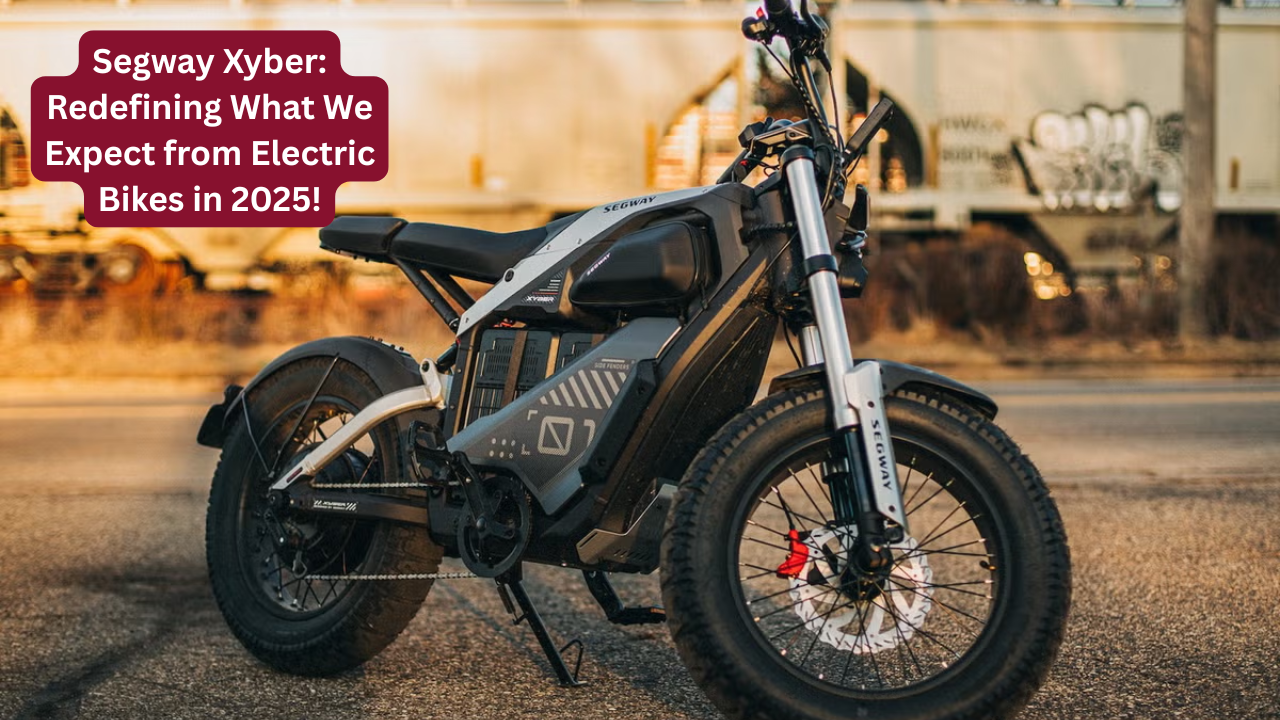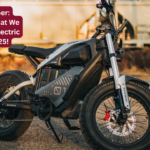Segway is a name that’s typically synonymous with personal transporters and scooters, but their newest venture—the Segway Xyber—takes them into a completely different territory: heavyweight e-bikes. As a longtime fan of Segway’s products, I was immediately intrigued by the announcement of the Xyber and eager to test it out. After weeks of real-world testing, I can confidently say that the Xyber is not just another e-bike. It’s a glimpse into the future of personal mobility, setting a new standard for what e-bikes can offer.
First Impressions: A Futuristic Design
The first thing that stands out about the Segway Xyber is its design. In a market crowded with bulky e-bikes, the Xyber cuts a striking profile. The frame is sleek and streamlined, with clean lines and a modern look that feels ahead of its time. It stands in stark contrast to its competitors, like the Super73 or Ride1Up Revv1, which have more utilitarian and sometimes clunky designs. What really sets the Xyber apart is the seamless integration between the frame and the battery system.
Rather than simply bolting a battery onto an existing frame, Segway has engineered the bike and the battery to work as one. The design is so well thought out that when you add the second battery, it slides into the frame effortlessly, as though it was always meant to be there. There are no unsightly add-ons or compromises in the bike’s appearance. This integration makes the bike look futuristic and clean, while also serving a functional purpose in terms of performance.
Assembly out of the box was surprisingly easy, and Segway made sure the process was as minimal as possible. The bike comes mostly pre-assembled, and all I had to do was install the handlebars, pedals, and the second battery. Installing the second battery was a little time-consuming but straightforward, thanks to the clear instructions and the fact that Segway provides all the necessary connectors right in the box. It’s a nice touch that makes the process feel less daunting, even for those who are not mechanically inclined.
Weight and Handling: A Delicate Balance
Once the Xyber is fully assembled, one thing becomes immediately apparent: it’s heavy. With both batteries installed, the bike weighs approximately 165 pounds; with a single battery, it weighs around 138 pounds. This weight is on the heavier side of the e-bike spectrum, and it’s something potential buyers should keep in mind, especially if they plan on lifting the bike into their car or carrying it up stairs.

Despite its weight, Segway has managed it incredibly well. The deep placement of the batteries in the frame gives the Xyber a low center of gravity, which helps distribute the weight evenly between the front and rear wheels. This thoughtful design makes the bike feel balanced and stable, even on rough terrain. The overall result is a bike that feels surprisingly nimble for its size, giving riders more confidence when navigating challenging landscapes.
Giant Tires: Comfort Meets Power
The Segway Xyber rides on massive 20-by-5-inch tires—some of the largest you’ll find on a fat-tire e-bike. The oversized tires offer a sturdy and stable base, but they do have a downside: they make the bike less nimble. Quick turns and tight maneuvers take more effort compared to other e-bikes with smaller tires. However, this tradeoff is more than worth it when you consider the comfort and versatility these tires provide.
I had the chance to take the Xyber off-road, and it was a revelation. The huge tires, combined with a plush suspension system, make for a ride that feels incredibly smooth, even on rugged terrain. Whether you’re tackling gravel paths, dirt roads, or even sand, the Xyber glides effortlessly over obstacles. These tires also provide a stable platform, which is especially useful when navigating uneven surfaces or dealing with unexpected bumps.
Performance and Power: Three Modes for Every Need
Segway offers three distinct riding modes on the Xyber: Eco, Sport, and Race. Each mode brings something different to the table, allowing riders to choose the level of performance that best suits their needs.
- Eco Mode: This is the mode for riders looking to maximize battery life. It’s ideal for longer commutes or leisurely rides where speed isn’t a priority. Despite being the most energy-efficient mode, Eco still provides a smooth and enjoyable ride, and it’s great for those who want to stretch the range of the bike as far as possible.
- Sport Mode: Sport mode is a great all-around setting that strikes a balance between speed and battery conservation. Acceleration is quick and responsive, but it’s also controlled, so you won’t find yourself speeding up too fast and losing control. This mode is perfect for most everyday rides, whether you’re cruising around town or going for a longer ride in the countryside. I found myself using Sport mode the most during my test.
- Race Mode: This is where the Segway Xyber truly comes to life. Race mode is for those moments when you want to feel the raw power of the bike. Acceleration is mind-blowing, and the bike takes off with a rush. In Race mode, the bike can reach speeds of up to 36 mph on flat ground, which is incredibly fast for an e-bike. While it’s not quite on the level of high-performance electric bikes like those from Surron or Talaria, it’s still a formidable machine capable of competing in terms of speed and power.
Throttle response is smooth across all modes, and I was particularly impressed with how predictable it was. Unlike other e-bikes I’ve ridden, the power delivery on the Xyber is gradual and linear, meaning you don’t experience any sudden jolts of power that might cause you to lose balance. This was especially helpful when navigating through busy streets or dodging pedestrians, as I could modulate the speed easily and without any unpleasant surprises.
Pedal Assist: More About the Legalities Than Practicality
Although the Xyber does come with a pedal assist feature, pedaling this bike without the help of the motor is a challenge. Even on flat ground, the sheer weight of the bike and the rolling resistance of the massive tires make pedalling a workout, and not in a good way. The pedal assist sensor is more of a legal requirement than a practical feature, as it’s not something most riders will rely on for regular use.
In terms of legal classification, the pedal assist feature ensures that the Xyber complies with regulations that differentiate e-bikes from motorcycles. However, for most riders, they’ll likely be relying on throttle power or motorised assistance for all their riding needs.
Conclusion
After spending several weeks with the Segway Xyber, it’s clear that this e-bike is something special. It’s not just an electric bike; it’s a glimpse into the future of personal transportation. With its sleek design, powerful performance, and ability to handle any terrain, the Xyber is a formidable machine that pushes the boundaries of what an e-bike can do.
While it’s on the heavier side and not the most agile bike in its class, the Xyber’s massive tires and low center of gravity make it an incredibly stable and comfortable ride. Whether you’re looking for a fun off-road adventure or a fast city commute, the Xyber delivers on both fronts.
For anyone looking for an e-bike that offers something more than just basic functionality, the Segway Xyber is an exciting and forward-thinking option that is sure to redefine how we think about electric bikes.

Deepak Grover is a dedicated content writer at OTE News, specializing in government affairs, public policy, and current events. With a keen eye for detail and a passion for factual reporting, he ensures readers receive accurate and insightful news. Deepak holds a degree in Political Science and has experience in research-driven journalism.
When not writing, he enjoys reading historical books, exploring hiking trails, and staying updated with global political trends. His commitment to ethical journalism makes him a trusted voice at OTE News.









